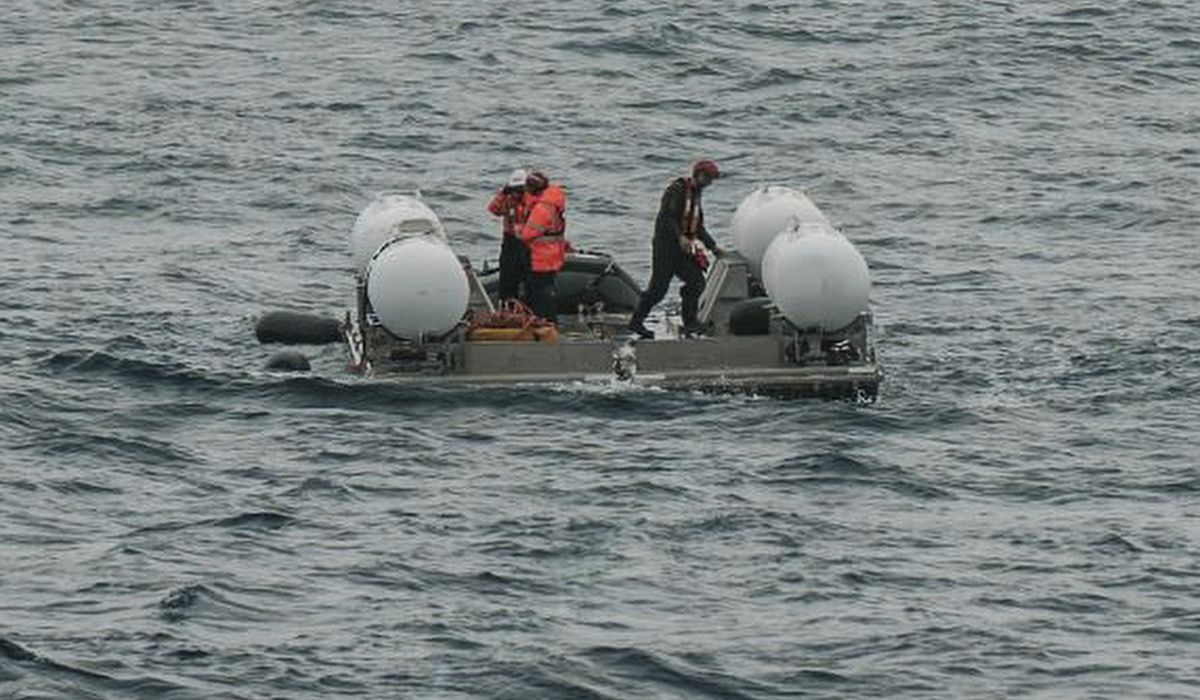


The search for a small submarine and five crewmembers who disappeared near the deep-sea wreckage of the Titanic reached an urgent stage Tuesday as the vessel’s oxygen supply dwindled.
U.S. Coast Guard Captain Jamie Frederick said during an afternoon media briefing in Boston that the “Titan,” a 21-foot tourism and research submersible, has about 41 hours of breathable air left in the vessel — less than half of the Titan’s total 96-hour supply it has stored on board.
It’s unclear what other supplies are on board the vessel, if any.
The firm that operates the sub lost contact with the crew on Sunday.
USCG officials said they don’t have any equipment in-house that could venture the 2.5 miles below the surface to the Titanic site, and shared that they were in discussions with private companies who do have the technology to aid in the search.
Authorities didn’t disclose whether those private companies were already on scene and were assisting the search that’s being coordinated between the USCG, the Canadian Coast Guard and the Canadian Armed Forces.
“This is a very complex search, and the unified team is working around the clock to bring all available assets and expertise to bear as quickly as possible in an effort to solve this very complex problem,” Capt. Frederick said.
French President Emmanuel Macron is sending the research ship Atlante to join the search for the small sub. The ship, which should reach the search area by Wednesday night, has a robot that can reach the depths of the Titanic’s wreckage.
“This is a race of time that started [Monday] night and France has responded to the calls from American authorities,” Hervé Berville, France’s Secretary of State in charge of Sea, told CNN affiliate BFMTV on Tuesday.
The search covers an area that is slightly larger than the state of Connecticut and has mainly consisted of authorities deploying sonar buoys on the surface that can detect sounds underwater.
Capt. Frederick said that search teams are also using remotely operated vehicles that can go beneath the surface in hopes of finding clues about the submersible’s whereabouts.
The Titan was first reported missing Sunday night by excursion organizer OceanGate Expeditions. The Coast Guard said that the company lost contact with the vessel less than two hours after its initial descent Sunday morning.
Aboard the Titan is OceanGate’s founder Stockton Rush, British explorer Hamish Harding, Titanic researcher Paul-Henri Nargeolet and British businessman Shahzada Dawood and his son, Suleman.
An interview with Mr. Nargeolet that aired in 2017 said that crew members of a vessel could survive four to five days if stuck on the bottom, but that passengers would likely freeze to death before then.
“The real problem at [the Titanic’s] depth is the temperature, because the water temperature is 33 degrees,” the former diver for the French Navy said. “After a while you die because of the cold, which is not a bad way to die because you fall asleep and you don’t suffer.”
• Matt Delaney can be reached at mdelaney@washingtontimes.com.
